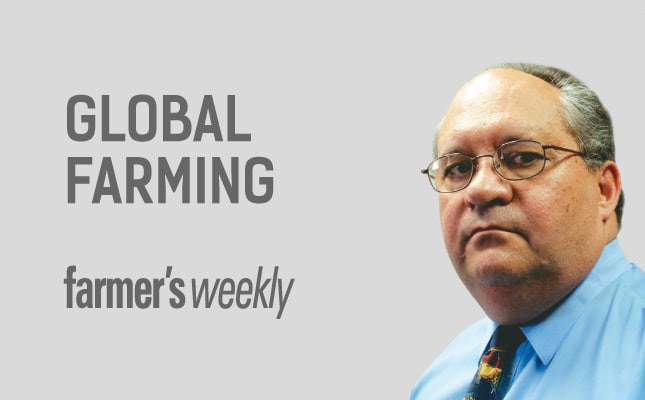
Global food demand has recovered from the effects of the 2008 recession, when prices reached record levels and countries had to establish stringent rules to ensure that local food supplies were not depleted by excess exports. The reasons for the spike in food prices are well known. They include a growing population, especially in developing countries, where increased income created a new group of consumers who began eating protein-based foods in preference to starch.
READ:Why farmers can look forward to a positive 2017
In turn, the higher demand for protein foods – especially for animal-produced proteins – resulted in higher grain demand. Global grain supply and demand were already in a tight balance and crop failures in several countries pushed prices to new levels.
Food prices then dropped as the recession caused a sharp decrease in total demand. They have recovered since 2009 and food price indices have now settled into a new equilibrium. Concern about weather conditions and the political unrest in the Black Sea region has boosted international food prices since February 2014. In general, though, food prices are expected to stabilise at current levels, with the possible exception of animal products, where higher demand and higher prices are likely.
Outlook for grain
World wheat production during 2014 is estimated at 702 million tons, 1,9% below last year’s record production.
Continuing strong demand, particularly from Asian countries is likely to keep trade volumes high. Global demand will grow to 699 million tons, 1,7% more than last year. Stocks are tightening and this has already resulted in firmer prices. Still higher prices are expected on global markets.
Coarse grain trade is expected to drop by 2,7% from the 2013/2014 record level. The main cause of this is the decrease in maize and, to a lesser extent, barley trade. Increased exports from the USA and Argentina will be offset by lower trade from Canada, Brazil and Argentina. Total use of coarse grains will increase by 1,8%.
The US department of agriculture expects that steady global economic growth will bolster crop demand. A recovery of corn-based ethanol production will also result in higher demand. The total coarse grain supply-to-utilisation ratio will decrease slightly, but not to such a degree that it will influence total supply and demand. World oilseed production, meanwhile, will reach an all-time high in 2013/2014.
Global consumption of oils and meals will continue to grow, driven by increased demand in Asia. Higher production will replenish stocks and keep supply and demand in balance.
Outlook for meat
The demand for meat will grow by 1,1% in 2014, largely through faster growth in developing countries. Internationally, meat prices have remained high for the past three years, although lower grain prices have resulted in lower poultry and pork prices. Bovine and ovine meat prices have remained stable, principally as a result of limited export capability.
The global meat trade is expected to increase moderately in 2014, but this will be less than average, due to production restrictions in exporting countries. Thus, while growth is expected in the beef and poultry sectors, little growth is expected in the poultry and pork meat trade.
Implications for SA’s farmers
The prices that South African farmers receive are determined to a larger extent by local supply and demand than by international conditions. However, the very large maize crop will result in maize prices close to export parity. Last season, prices did not remain at export parity level as exports increased during the year. The weak rand largely protected farmers against the slightly lower prices on global markets.
Meat demand is under pressure from cash-strapped consumers, who are struggling to make ends meet, especially in the light of rising administrated prices. The local market for food is thus expected to remain difficult. Meat supply was artificially inflated by drought sales and especially by the influx of cattle from Namibia. But this oversupply cannot continue indefinitely.
Lower grain prices improved the profitability of intensive feeding of sheep and cattle. As a result, livestock producers can expect higher prices in the coming months.
Dr Koos Coetzee is an agricultural economist at the MPO. All opinions expressed are his own and do not
reflect MPO policy.




